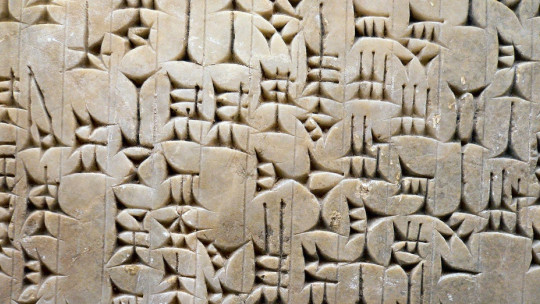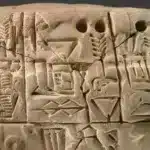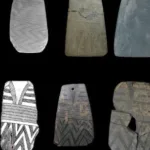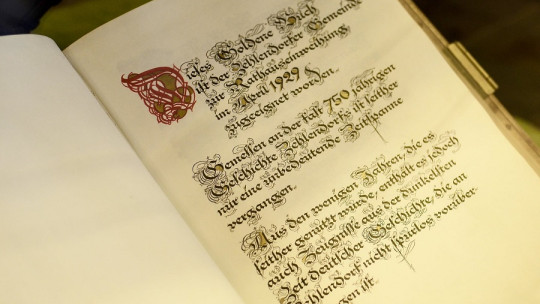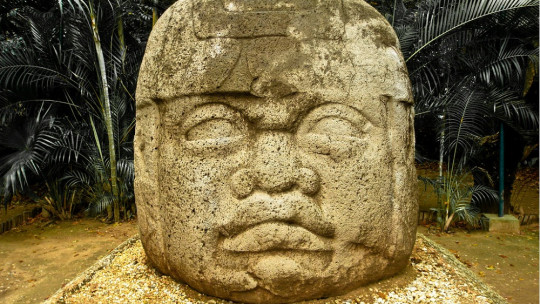Right now, I’m typing at my computer. I follow, therefore, a writing process that, for us, is something everyday and has nothing exceptional or strange about it. Indeed; Every day we face this task, just as our ancestors have been doing for millennia.
But do we know what was the origin of this (exclusively) human manifestation? Where do we find the first testimonies of writing? And, what motivated human beings to leave their ideas in writing?
Join us on this fascinating journey to the origins of writing in which we will try to answer all these questions.
The origin of writing: Mesopotamia or Egypt?
There are still debates among experts about which is the cradle of writing. Specifically, the possibilities are limited to two places: Mesopotamia and Egypt.
“Mesopotamia” is the name given to the valley formed by the Tigris and Euphrates rivers, and would correspond more or less to the current countries of Iran and Iraq. The Greek word for the region, Mesopotamia, literally means “between rivers.” Indeed, in the fertile valley that stretched between both river courses, important civilizations developed, which owed part of their extraordinary culture to the first stable settlements.
With the appearance of agriculture, human groups definitively settled in a territory Mesopotamia, with its fertile lands, suitable for cultivation and livestock breeding, stands as one of the best places for the emergence of the first populations.
One of these civilizations were the Sumerians who, from the 4th millennium BC, left written testimonies These writings used the cuneiform alphabet and were made on damp clay tablets in which incisions were made with a pen or sharp awl. The clay dried and, in this way, these written manifestations have lasted to the present day.
This first cuneiform writing consisted of pictograms : that is, each graph corresponded to a syllable. One of the oldest cuneiform manifestations is the Kish tablet, made around 3,500 BC on limestone. It is, therefore, three centuries older than what is known as the “Narmer palette”, in which the first Egyptian hieroglyphs are found.
We would thus have testimony that Mesopotamian writing is much older than Egyptian writing. However, in 1998 samples of proto-hieroglyphic writing were discovered in Abydos which would indeed be contemporary with cuneiform writing, which only fuels the controversy.
A purely administrative origin
Writing was born as a practical solution to the need to have records of goods and commercial exchanges. The first Sumerian documents are inventories of products, essential in an eminently agricultural society. Later, writing was also applied to the codification of laws; A good example is the Code of Hammurabi , engraved in cuneiform on a black basalt stele preserved in the Louvre Museum. The stele includes the first legislative record, and deals with topics such as theft, adultery or homicide.
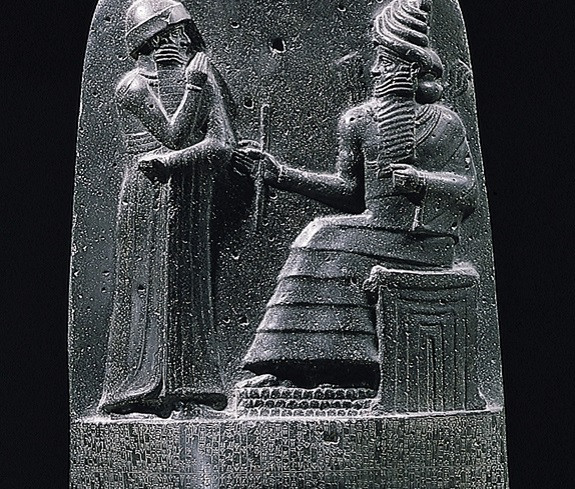
We will have to wait until the 3rd millennium BC to find the first strictly literary expression: the one known as Gilgamesh poemthe Akkadian retelling of a Sumerian myth that constitutes the first example of written literature in history.
Language and alphabet
It is necessary to make a point: alphabet is not the same as language. An alphabet is a system of symbols and spellings that are used to express a language in writing. Using an alphabet it is possible to transcribe an indefinable number of languages. A very clear example would be our Western alphabet; With it we can write in Spanish, but also in English, German, Swedish, French, etc.
Therefore, if we return to cuneiform writing, we have that, although it was originally the exclusive system of the Sumerian language, it was later used in a multitude of cultures. In fact, cuneiform became the “official” writing of the Mesopotamian civilizations. Thus, the Akkadians (who spoke a Semitic language), the Hittites and the Persians used the cuneiform system to capture their languages in writing. This, of course, led to a number of problems: It was often necessary to alter the original characters to transcribe sounds that did not exist in Sumerian
Cuneiform writing is one of the longest in history. It was used continuously from the dawn of the Sumerian civilization, in the 4th millennium BC, until the 1st century AD. Specifically, the last known cuneiform writing dates back to the year 75 AD. At that time this writing system was already completely displaced by the Greek and Latin alphabet, which we will talk about later.
Vestiges that speak
It is estimated that the gender Homo oral language began to develop about 100,000 years ago, perhaps based on gestural communication, which later consolidated into spoken language.
Due to its very oral nature, it is much more difficult to date the origin of speech than that of writing. However, much progress has been made in this field; through fossil remains of human skulls, paleoneurology can study the most developed brain areas and measure, in this way, the linguistic capacity of the individual. The written remains, for their part, are much more precise since, through the archaeological context and through techniques such as carbon-14 dating, chronological limits can be established more accurately.
Rawlinson, the cliff and cuneiform characters
The first discoveries of cuneiform writing occurred in the 17th century, when Pietro della Valle discovered some tablets in the remains of the city of Persepolis in 1621 Later, in 1700, Thomas Hyde, of the University of Oxford, coined the term “cuneiform” to refer to this writing system, in reference to the wedge shape of the characters. But we would have to wait until the 19th century (specifically, 1802) for the first interpretations of this writing to be made. That year, Georg Friedrich Grotefend (1775-1853) presented a first study to the Royal Society of Göttingen, which was later completed by authors such as Emile Burnouf.
More notable was the case of Henry Rawlinson, a British army officer who, in 1835, dared to access the cliff of the Zagros Mountains (Iran) where an enormous relief of King Darius I surrounded by writing was erected, sculpted in the rock. cuneiform. The colossal dimensions of the work (15 meters high and 25 meters long) and its difficult location meant that no one dared to examine it. Rawlinson gathered his courage and managed to climb down the cliff and extract a copy of the characters. The text was written in three languages: Elemite, Babylonian and Old Persian, which made its translation easier, since the latter It was an alphabetic language and, therefore, much easier to interpret (the other two had syllabic structure). This is why these reliefs are known as “the Persian Rosetta stone”.
The “original” Rosetta stone
Why are the Zagros Mountains reliefs known as “the Persian Rosetta Stone”? Because, a decade before Rawlinson, in 1822, Jean-François Champollion, a young French historian, had found the key to deciphering the enigmatic Egyptian hieroglyphs. This key was a basalt stele, found in 1799 near Rosetta during Napoleon’s campaign in Egypt, which contained a text written in hieroglyphic characters, in demotic and ancient Greek. From the latter, Champollion was able to decipher the other two. Previously, the Rosetta Stone had already aroused enormous interest in European scholarly circles; Thomas Young published some of his conclusions in 1818, four years before Champollion’s complete translation.
Egyptian hieroglyphs are a unique and very complex writing system, since It is made up of both ideograms and phonograms The former function as literal transcriptions of an object, but they can also serve as determiners; That is, they determine to which class a word belongs. On the other hand, phonograms collect sounds, which can be uniliteral or alphabetic (one sound per sign) or biliteral (two sounds). To further complicate matters, the ancient Egyptian language did not include vowels in its writing, something common in archaic languages. For this reason, and in order to pronounce the words, Egyptologists agreed that they would be read with the letter “e”. Now you understand why there are so many words in ancient Egypt that contain this vowel: Nefer (beauty, beautiful) or per (home).
Ancient Egyptian hieroglyphs were basically found in temples and tombs; that is, in sacred locations. In fact, the word “hieroglyph” is composed of the Greek words hieros (sacred) and glyphein (engrave, chisel). From this sacred writing we passed to the hieratic, which adapted the hieroglyphs and simplified them for use in everyday activities such as state bureaucracy or accounts. Finally, the last manifestation of ancient Egyptian writing is found in Demotic, which corresponds to the late period and presents a clear Greek influence.
The Phoenician alphabet and the end of archaic writing
The exclusively phonetic and uniliteral alphabet (which we still use) appeared in Chaldea around 1,500 BC It was the Phoenicians (who were located in present-day Lebanon) who exported this type of alphabet to the rest of Europe, through their trade routes. The Greeks adapted the Phoenician alphabet and introduced new spellings to transcribe sounds that did not exist. Thus, around the year 800 BC, the Greek alphabet was born, from which both Latin and Cyrillic descended. The first is the one that is still in use in our Western civilization, while the second is still used in countries like Russia and Bulgaria.


